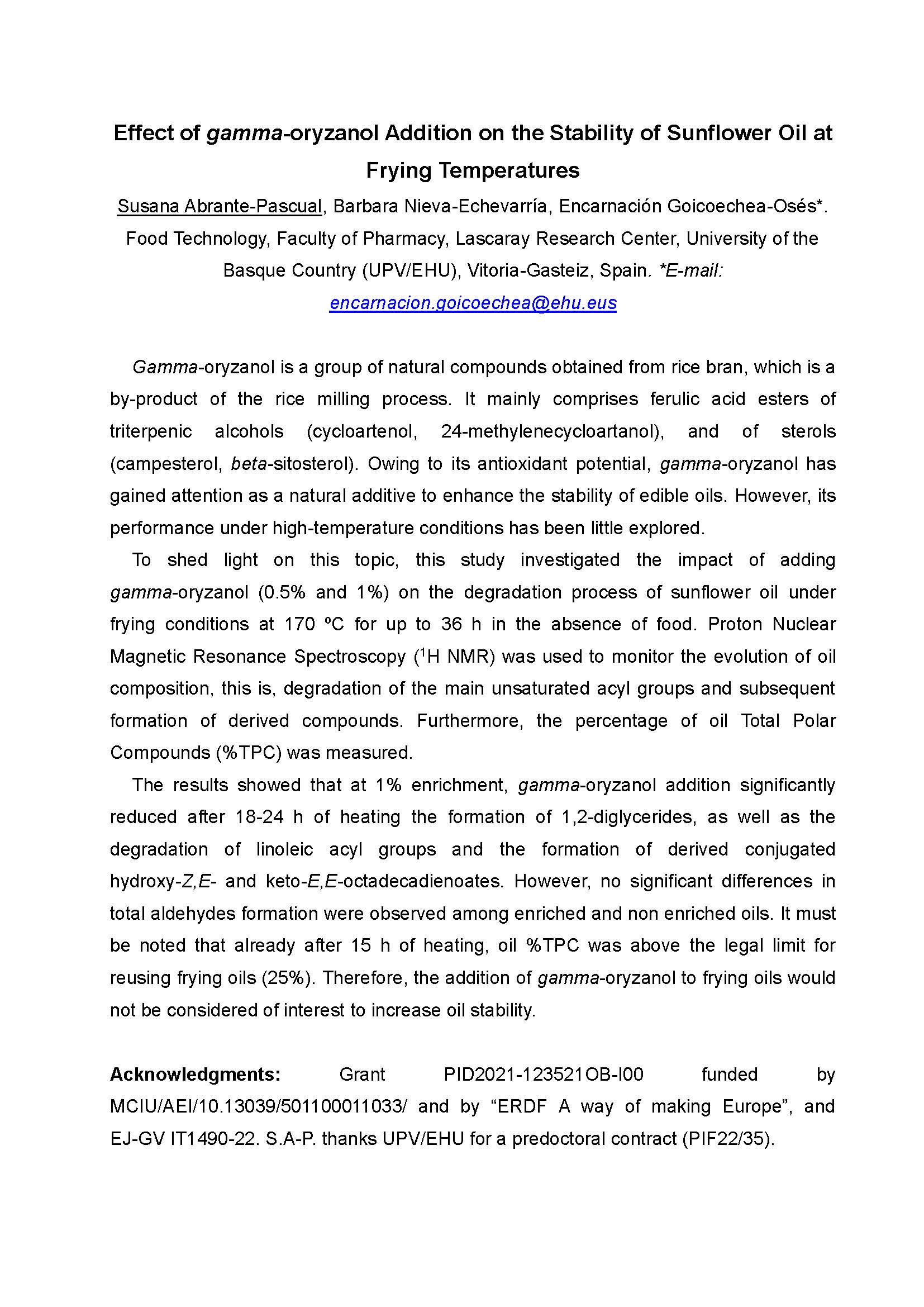Gamma-oryzanol is a group of natural compounds obtained from rice bran, which is a by-product of the rice milling process. It mainly comprises ferulic acid esters of triterpenic alcohols (cycloartenol, 24-methylenecycloartanol), and of sterols (campesterol, beta-sitosterol). Owing to its antioxidant potential, gamma-oryzanol has gained attention as a natural additive to enhance the stability of edible oils. However, its performance under high-temperature conditions has been little explored.
To shed light on this topic, this study investigated the impact of adding gamma-oryzanol (0.5% and 1%) on the degradation process of sunflower oil under frying conditions at 170 ºC for up to 36 h in the absence of food. Proton Nuclear Magnetic Resonance Spectroscopy ( 1H NMR) was used to monitor the evolution of oil composition, this is, degradation of the main unsaturated acyl groups and subsequent formation of derived compounds. Furthermore, the percentage of oil Total Polar Compounds (%TPC) was measured.
The results showed that at 1% enrichment, gamma-oryzanol addition significantly reduced after 18-24 h of heating the formation of 1,2-diglycerides, as well as the degradation of linoleic acyl groups and the formation of derived conjugated hydroxy-Z,E- and keto-E,E-octadecadienoates. However, no significant differences in total aldehydes formation were observed among enriched and non enriched oils. It must be noted that already after 15 h of heating, oil %TPC was above the legal limit for reusing frying oils (25%). Therefore, the addition of gamma-oryzanol to frying oils would not be considered of interest to increase oil stability.
Acknowledgments: Grant PID2021-123521OB-I00 funded by MCIU/AEI/10.13039/501100011033/ and by “ERDF A way of making Europe”, and EJ-GV IT1490-22. S.A-P. thanks UPV/EHU for a predoctoral contract (PIF22/35).
